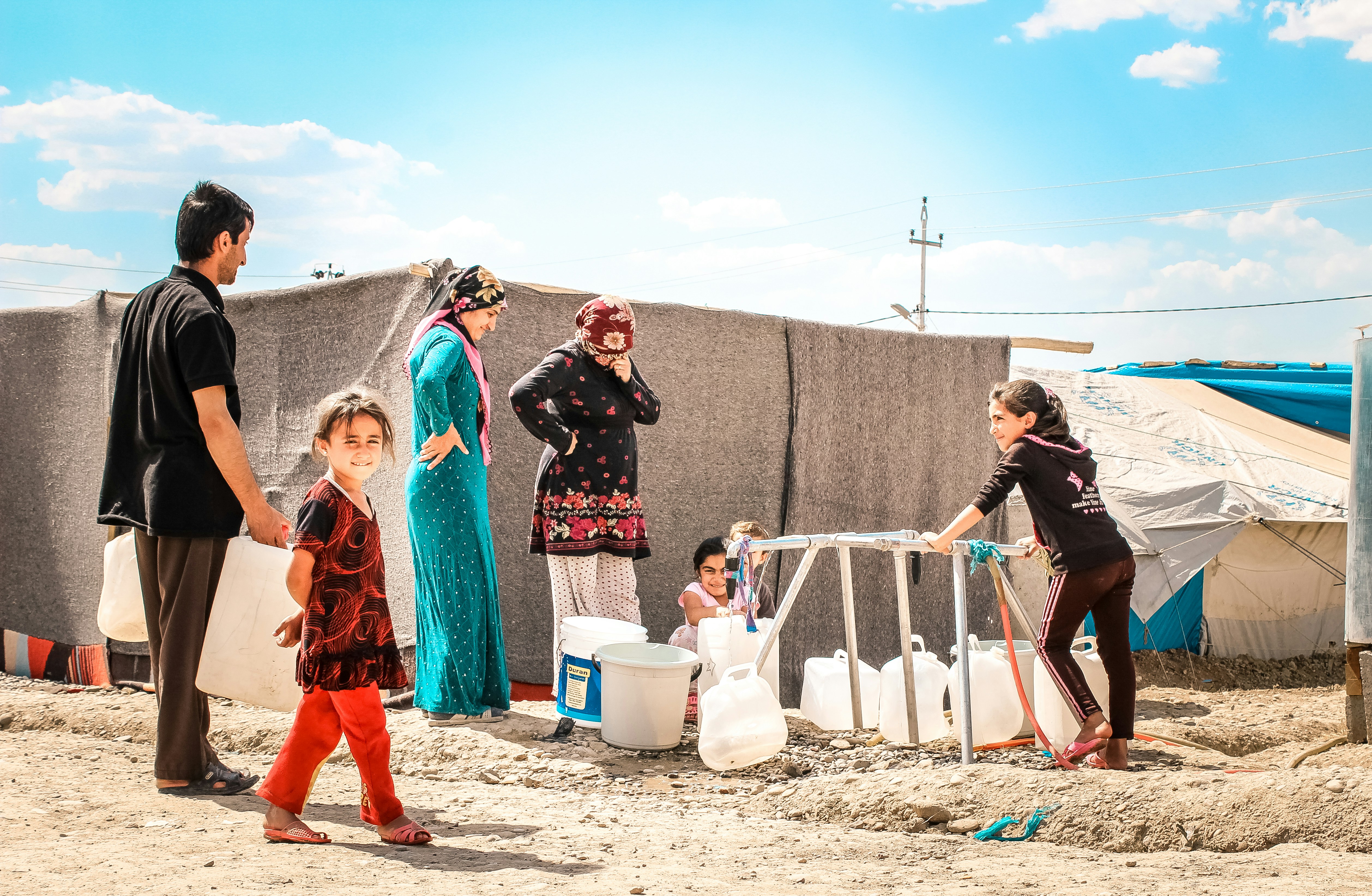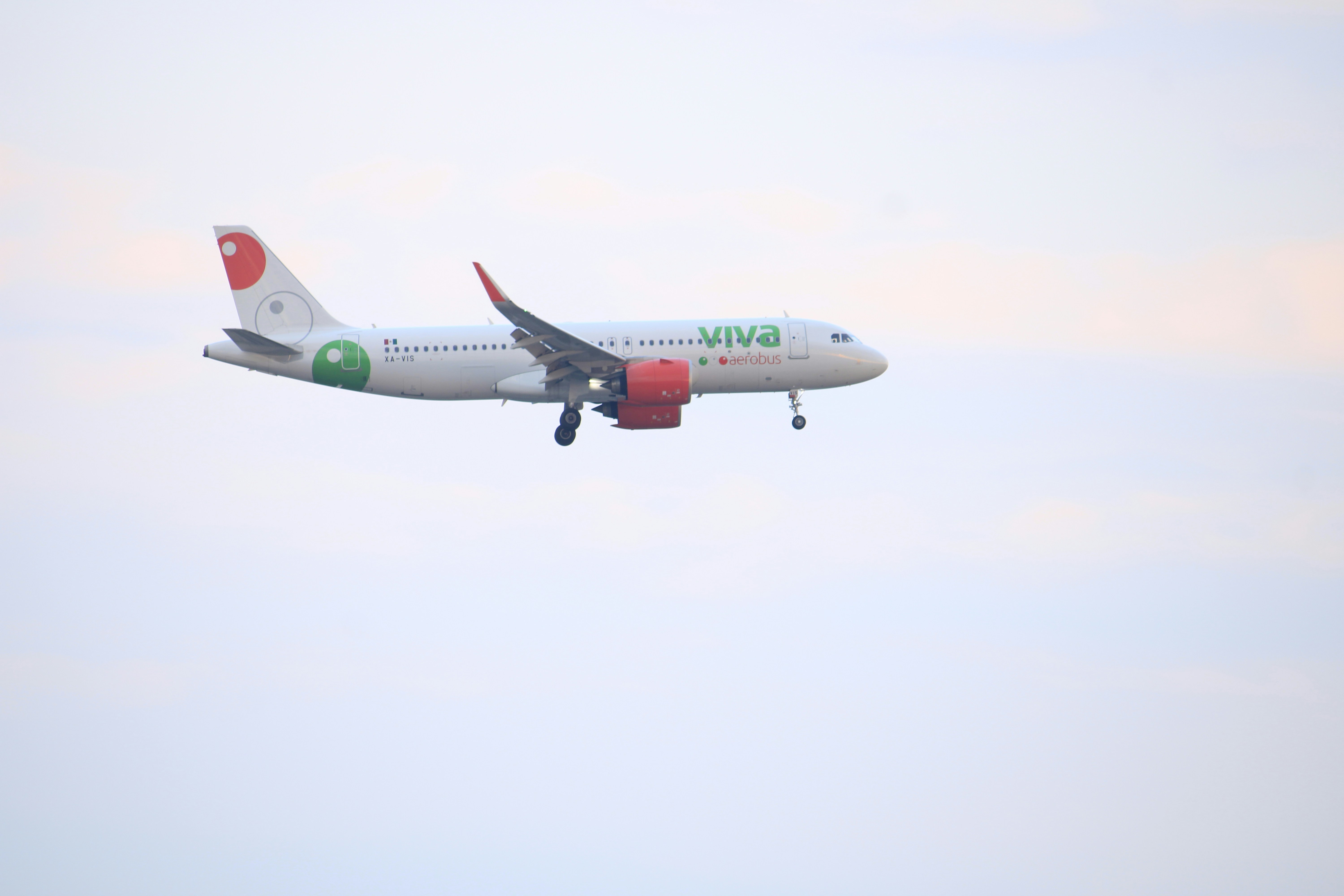Exploring São Paulo: A Journey Through Brazil’s Vibrant Metropolis

Photo by thiago japyassu on Unsplash
Introduction to São Paulo
São Paulo is not only the largest city in Brazil but also stands as a pivotal urban center in South America, both in terms of cultural influence and economic clout. Established in 1554, the city has evolved over centuries into a bustling metropolis that embodies a unique blend of modernity and tradition. With an estimated population of over 12 million people, it is the most populous city in the country, showcasing an extraordinary level of diversity. This vibrant metropolis is home to individuals from various ethnic backgrounds including, but not limited to, Italian, Japanese, and Lebanese communities, contributing to its rich cultural tapestry.
The significance of São Paulo extends far beyond its demographic variety. It serves as Brazil’s economic powerhouse, accounting for a significant portion of the nation’s GDP and housing numerous multinational corporations. The city’s financial district, known as the Avenida Paulista, plays a critical role in the economic landscape, attracting businesses and entrepreneurs from around the globe. In addition to its role in finance, São Paulo is renowned as a culinary capital, offering a plethora of gastronomic experiences that range from traditional Brazilian steakhouses to sophisticated international cuisine. The city hosts a myriad of food festivals that celebrate this culinary diversity, providing residents and visitors alike with an opportunity to indulge in a rich array of flavors and dishes.
Moreover, São Paulo’s dynamic environment is underscored by its rich history, visible in the juxtaposition of contemporary skyscrapers against colonial-era buildings. Cultural institutions, such as museums, theaters, and galleries, dot the landscape, making it a haven for art and culture enthusiasts. This cultural richness is reflected in the active calendar of events that the city offers, from music festivals to art exhibitions, enhancing the city’s appeal as a major global destination.
Historical Landmarks and Cultural Sites
São Paulo, as one of the largest cities in Brazil, is a tapestry of history and culture, woven through its many historical landmarks and cultural sites. Among the most notable is the São Paulo Cathedral, a prime example of neo-Gothic architecture. Completed in 1924, this majestic structure is not only an architectural marvel but also serves as a symbol of the city’s growth and religious significance. The cathedral’s intricate stained glass windows and towering spires attract both visitors and worshippers alike, making it a vital part of São Paulo’s cultural landscape.
Another significant site is the Municipal Market, officially known as Mercado Municipal de São Paulo. Established in 1933, it is renowned for its vivid atmosphere and diverse culinary offerings. The market showcases a wide array of local produce, gourmet foods, and traditional Brazilian dishes, illustrating the rich gastronomic heritage of São Paulo. Visitors can indulge in various culinary experiences, making it an essential stop for anyone wishing to understand the cultural fabric of the city. The market also houses the famous mortadella sandwich, which has become an iconic dish associated with São Paulo’s culinary scene.
Pátio do Colégio, the historical birthplace of São Paulo, is another landmark worthy of exploration. Established in 1554 by Jesuit missionaries, this site marks the foundation of the city itself. Its charming courtyard and the adjacent church reflect the early days of São Paulo and its deep-rooted connections to Catholicism and education. Today, the Pátio do Colégio functions as a cultural center, housing a museum and educational programs that highlight the city’s historical narratives. Each of these landmarks invites visitors to immerse themselves in São Paulo’s rich heritage, fostering a deeper understanding of the city’s identity through its architectural and cultural assets.
Famous Parks and Outdoor Spaces
São Paulo, one of the largest cities in Brazil, is not only a bustling urban center but also home to a variety of parks and outdoor spaces that enhance the quality of life for its residents and visitors. Among the most renowned of these green spaces is Ibirapuera Park, a sprawling urban oasis that covers an impressive area of over 1.5 million square meters. Established in 1954, Ibirapuera Park serves as a cultural and recreational hub, offering a plethora of activities such as jogging, cycling, and picnicking. The park features extensive walking trails, picturesque lakes, and several museums, including the Museum of Modern Art and the Afro-Brazil Museum, making it a popular spot for art enthusiasts.
Villa-Lobos Park is another significant green space in São Paulo, named after the esteemed Brazilian composer Heitor Villa-Lobos. This park extends over 740,000 square meters and boasts well-maintained facilities for various recreational activities. Visitors can enjoy biking, walking, and even outdoor concerts held on weekends. The park’s design encourages interaction with nature, featuring native plant species and an impressive collection of trees that provide ample shade, making it a prime location for relaxing and unwinding amidst the city’s hustle and bustle.
Both parks play a crucial role in São Paulo’s urban life by offering residents opportunities for relaxation and recreation. They act as crucial lungs for the city, providing a respite from the fast-paced lifestyle that characterizes life in a metropolis. Cultural festivals and events frequently take place in these green spaces, allowing locals and tourists to engage with Brazil’s rich cultural heritage. With numerous outdoor activities available, such as family-friendly picnics or fitness enthusiasts jogging along scenic paths, these parks are indispensable for fostering a sense of community and promoting a healthier lifestyle in São Paulo.
Culinary Delights: A Taste of São Paulo
São Paulo, Brazil’s largest city, is not only a bustling urban center but also a culinary wonderland that reflects its rich cultural diversity. The city’s food scene is a vibrant tapestry woven from various influences, particularly from European, Asian, and Middle Eastern traditions. One of the most iconic dishes that represents this gastronomic landscape is feijoada, a hearty black bean stew typically prepared with a variety of salted meats. This dish is both a staple and a comfort food in São Paulo, often enjoyed during family gatherings and festive occasions.
Another must-try delicacy is pão de queijo, a delightful cheese bread that hails from the state of Minas Gerais but has found a permanent home in São Paulo’s bakery scene. These chewy, gluten-free rolls are made from tapioca flour and cheese, resulting in a savory snack that pairs perfectly with coffee. Visitors should not miss the vibrant street food offerings, particularly pastéis, which are deep-fried pastries filled with an array of ingredients, including cheese, meat, and vegetables. These delicious treats are best enjoyed at local markets, where the atmosphere buzzes with energy and flavor.
The city’s culinary landscape celebrates a multitude of flavors, driven by its immigrant communities. Italian influences are evident in the numerous pizzerias and pasta houses scattered throughout the city, while Japanese techniques and ingredients have also made their mark, especially in the neighborhoods of Liberdade and Mooca. For those interested in exploring São Paulo’s food scene, markets such as the Municipal Market of São Paulo, known for its mortadella sandwich and pastel de bacalhau, are highly recommended. This market showcases local produce and artisanal goods, providing an authentic taste of the region’s offerings.
As the culinary melting pot of Brazil, São Paulo’s food scene is a must-experience aspect of the city that will leave visitors captivated by its rich flavors and textures.
Art and Music: The Soul of São Paulo
São Paulo, Brazil’s vibrant metropolis, is not only known for its vastness and diversity but also for its rich tapestry of art and music that breathe life into the city. The São Paulo Museum of Art (MASP) is a pivotal institution in this cultural landscape, renowned for its striking modernist architecture and its collection of Western art. With pieces ranging from Renaissance to contemporary works, MASP has become a beacon for art enthusiasts and casual visitors alike. The museum, located on Avenida Paulista, serves as a central hub for artistic dialogue and cultural exchange, offering exhibitions that often reflect the complex narratives of Brazilian history and identity.
In addition to formal art institutions like MASP, São Paulo is globally recognized for its dynamic street art scene. The city’s walls serve as canvases for powerful expressions and community messages, drawing attention to social issues and local culture. Renowned artists such as Eduardo Kobra and Os Gêmeos have contributed to the city’s urban art landscape, making it an open-air gallery for art lovers. This vibrant street art culture not only enhances the aesthetic of São Paulo but also fosters a sense of belonging and pride among its residents.
The music scene in São Paulo is equally dynamic, showcasing a multitude of genres, with samba and bossa nova at the core of its cultural identity. These musical styles reflect the city’s multifaceted heritage and are integral to local celebrations and festivities. Venues such as the legendary Bar Brahma and the more contemporary Casa de Francisca offer locals and visitors a taste of live performances that capture the heart of Brazilian music. Festivals like the Virada Cultural further illustrate São Paulo’s dedication to the arts, providing a stage for both established and emerging talents. Through art and music, São Paulo continues to affirm its status as a vibrant cultural hub, engaging both its inhabitants and visitors in a lively dialogue that is distinctly Brazilian.
Shopping and Local Markets
São Paulo, Brazil’s bustling metropolis, offers a plethora of shopping experiences that cater to a range of tastes and budgets. The city’s vibrant shopping scene is characterized by a blend of modern malls and traditional local markets, providing both international brands and unique artisanal goods. One of the most iconic shopping destinations is the Shopping Iguatemi, which boasts high-end brands and upscale dining options, attracting both locals and tourists alike. Additionally, the city is home to numerous other shopping malls that feature a variety of stores, making it a convenient choice for those looking for a comprehensive shopping experience.
For an authentic shopping experience, visitors should not miss the opportunity to explore the local markets. The Mercado Municipal de São Paulo is an excellent place to start. This market is renowned for its diverse selection of fresh produce, local delicacies, and artisanal products. As shoppers navigate the colorful stalls, they can sample famous delicacies such as the mortadella sandwich and fresh fruits, which are particularly popular among locals.
Another must-visit location for shopping is Rua 25 de Março, a bustling street market known for its affordability and variety. This vibrant area is an immense hub for textiles, crafts, and souvenirs—perfect for those seeking to bring home a piece of São Paulo. The lively atmosphere is complemented by street vendors offering local snacks, providing a true taste of the city. The unique combination of shopping options available, from luxury to local goods, showcases São Paulo’s rich culture and community spirit. Each market and shopping venue presents visitors with opportunities to engage with the locals, enhancing their overall travel experience in this dynamic city.
Nightlife and Entertainment
São Paulo’s nightlife is as diverse and vibrant as its cultural landscape, offering a plethora of options for those looking to enjoy an evening out. The city is renowned for its extensive range of bars, clubs, and entertainment venues, catering to various tastes and preferences. One of the most popular neighborhoods for nightlife is Vila Madalena, an area known for its bohemian atmosphere, lively street art, and numerous establishments that come alive when the sun sets.
Vila Madalena is home to a plethora of bars and pubs, many of which feature local craft beers and artisanal cocktails. The district hosts a variety of live music venues where visitors can enjoy everything from samba to rock, showcasing São Paulo’s rich musical heritage. As one strolls through the streets, the vibrant ambience is palpable, with many places featuring outdoor seating that encourages a relaxed mingling of friends and new acquaintances alike.
For those seeking a more energetic experience, the dance clubs of São Paulo deliver an electrifying atmosphere, with international DJs setting the stage for unforgettable nights. Many of these clubs, located in neighborhoods such as Itaim Bibi and Moema, often have long queues but reward patrons with a memorable experience, featuring state-of-the-art sound systems and visually stunning environments.
Additionally, São Paulo is a hub for cultural events, including theater performances, art exhibitions, and film screenings. Venues like the renowned Teatro Municipal present an array of shows that highlight both local and international talent. With an ever-changing calendar of events, there is always something to engage the night owl seeking entertainment. In conclusion, São Paulo’s nightlife is truly a dynamic experience that reflects the city’s multifaceted identity, ensuring that every visitor can find their perfect night out.
Day Trips and Surrounding Attractions
São Paulo, known for its vibrant atmosphere and urban landscape, also serves as a gateway to numerous remarkable day trip destinations. Just a short distance from the bustling city, visitors can explore the picturesque coastal towns of Santos and Guarujá, renowned for their stunning beaches and cultural heritage. Santos, with its rich history in coffee production, boasts beautiful gardens and the famed Coffee Museum, allowing tourists to delve into Brazil’s coffee culture. In Guarujá, pristine shores like Praia da Enseada await, offering a perfect blend of relaxation and recreational activities such as surfing and beach volleyball.
For those interested in a different experience, Embu das Artes stands out as an enchanting destination. This charming town is well-known for its vibrant arts scene and offers an array of artisan shops, galleries, and local crafts. The weekly arts and crafts market is particularly notable, allowing visitors to engage with local artists and discover unique handmade items, from pottery to textiles. The town’s cobbled streets are lined with colonial architecture, creating a picturesque backdrop for exploration.
Nature enthusiasts can also venture to the nearby Serra do Mar State Park, which offers breathtaking views and an opportunity to experience the Atlantic Forest’s diverse ecosystem. Hiking trails wind through lush vegetation, providing a sense of tranquility away from the urban hustle and bustle of São Paulo. The park’s fauna and flora are a testament to Brazil’s rich biodiversity, making it an ideal spot for eco-tourism. Whether soaking up the sun on a beach or exploring quaint artisanal markets, these day trips from São Paulo enable travelers to appreciate Brazil’s natural beauty and cultural diversity right at their fingertips.
Practical Tips for Travelers
Traveling to São Paulo, one of Brazil’s most vibrant metropolises, can be an enriching experience with the right preparation. First and foremost, understanding transportation options is crucial for navigating the city effectively. São Paulo boasts an extensive public transportation system, including buses, subways, and ride-sharing services. The Metrô, São Paulo’s subway system, is one of the most efficient ways to traverse the city, especially during peak hours when traffic congestion is common. Buses are also widely available and can take you to more remote areas, although knowing basic routes and schedules will enhance your experience.
Safety is another important aspect for travelers in São Paulo. While the city offers many attractions, it is advisable to remain vigilant, particularly in crowded locations. Avoid displaying valuable items and be cautious when using your phone in public. Utilizing your hotel’s concierge for real-time safety updates and recommendations can also provide peace of mind. Furthermore, sticking to well-lit and populated areas, especially at night, is advisable.
Cultural etiquette is essential for interacting with locals. While many Paulistanos speak English, making an effort to learn basic Portuguese phrases can significantly enhance your experience and rapport with residents. Greeting in Portuguese with a friendly “Olá” or thanking someone with “Obrigado” can promote goodwill.
Consider timing your visit carefully, as the city’s climate greatly influences tourist activities. The best times to explore São Paulo are during autumn (March to May) and spring (September to November), when the weather is pleasantly mild. Finally, engaging in local cultural events or festivals can deepen your understanding and appreciation of São Paulo’s dynamic cultural landscape, allowing you to connect with both locals and fellow travelers alike.





